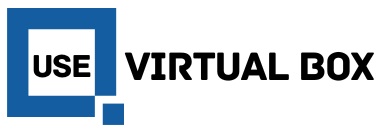In a world that’s constantly evolving, the quest for innovative solutions is more critical than ever. Enter TZM, an exciting framework that promises to revolutionize how we approach problems within various industries. Whether you’re in tech, healthcare, or education, understanding and leveraging TZM could unlock new avenues of growth and efficiency.
But what exactly is TZM? Why has it gained traction among forward-thinking organizations? As we delve deeper into this guide, you’ll discover not only its roots but also its guiding principles and practical applications. Get ready to explore the transformative potential of TZM and see how it can enhance your operations while addressing modern challenges head-on. Let’s embark on this insightful journey!
What is TZM?
TZM, or the Zeitgeist Movement, is a global initiative that advocates for systemic change in society. It promotes a new way of thinking about economics, technology, and human values.
At its core, TZM challenges conventional structures. It seeks to create a more sustainable world by addressing issues like resource allocation and social inequality. The movement emphasizes collaboration over competition.
TZM draws on interdisciplinary insights from sociology, environmental science, and psychology. This unique blend helps formulate solutions tailored to modern problems.
By encouraging individuals to rethink their roles within society, TZM aims for a collective awakening. This collective awareness can drive significant societal shifts toward sustainability and innovation.
Engaging with TZM means embracing new paradigms that prioritize human well-being alongside ecological balance. The potential impact could be profound as it redefines how we interact with each other and our environment.
History and Origins of TZM
The history of TZM, or The Zeitgeist Movement, dates back to the late 2000s. It emerged as a response to growing concerns about social inequality and environmental degradation.
Inspired by the documentary film “Zeitgeist: Addendum,” created by Peter Joseph, the movement sought to address systemic issues through education and advocacy. This film resonated with many who were disillusioned by traditional economic systems.
TZM’s roots can be traced to a blend of social activism, sustainability principles, and technological optimism. As people began questioning existing paradigms, TZM offered an alternative vision for a resource-based economy.
Over time, it gained traction globally. Local chapters formed across various countries, creating platforms for discussion and action regarding sustainable practices and social justice initiatives. Each chapter contributed its unique flavor while adhering to core principles laid out by the movement’s founders.
The Principles of TZM
TZM operates on several foundational principles that guide its implementation and philosophy. At its core is the belief in sustainability and resource management. This reflects an understanding of our planet’s finite resources.
Another essential principle is collaboration. TZM encourages cooperation among individuals, organizations, and communities to foster innovation and shared solutions. Working together enhances creativity while reducing redundancy.
Education plays a crucial role as well. Informing others about sustainable practices empowers them to make better choices for themselves and their environment. Knowledge sharing fuels progress within the movement.
Equity also stands out as a vital concept in TZM’s framework. Ensuring fair access to resources helps build a more just society where everyone can thrive without compromising future generations’ needs.
Holistic thinking connects these principles, emphasizing systems over isolated parts to tackle complex problems effectively.
Applications of TZM in Various Industries
TZM has found its footing across diverse industries, showcasing its versatility. In manufacturing, TZM enhances productivity by streamlining processes and minimizing waste. Organizations harness its principles to optimize supply chains and improve resource allocation.
In healthcare, TZM plays a pivotal role in patient care management. By applying its methodologies, hospitals can enhance service delivery and reduce operational costs. This approach leads to better health outcomes for patients.
The technology sector also benefits from TZM’s structured framework. Companies implement it to accelerate innovation cycles while maintaining quality standards.
Education systems are not left behind either; educators use TZM concepts to promote collaborative learning environments that foster creativity among students. The adaptability of TZM allows it to thrive in virtually any field where efficiency and effectiveness are paramount.
Benefits of Implementing TZM
Implementing TZM offers a variety of advantages that can significantly impact organizations and communities. One notable benefit is enhanced collaboration. By fostering an environment where ideas are shared openly, teams often produce innovative solutions.
Efficiency also sees improvement with TZM principles in place. Streamlined processes reduce waste and optimize resource allocation, allowing for better time management across projects.
Additionally, adopting TZM cultivates a culture of continuous learning. Organizations become more adaptive to change as employees embrace new methodologies and technologies.
Engagement levels tend to rise too. When individuals feel their contributions matter within the framework of TZM, motivation soars.
Transparency becomes a cornerstone of operations under this model. With open communication lines established, stakeholders gain trust in decision-making processes and outcomes.
Challenges and Limitations of TZM
Despite its promising framework, TZM isn’t without challenges. Implementing this model can often be met with resistance from traditional structures. Many organizations are deeply entrenched in established practices and may view TZM as a threat rather than an opportunity.
Another limitation lies in the need for extensive training. For team members to fully grasp the principles of TZM, they must undergo comprehensive education and mentorship. This requirement can lead to increased costs and time investment.
Moreover, measuring success within a TZM framework is complex. Standard metrics may not effectively capture the nuances of its impact on organizational culture or efficiency.
There’s a risk of oversimplification. While striving for efficiency and collaboration, some might overlook critical aspects such as individual creativity or specialized skills that contribute to overall performance.
How to Get Started with TZM
Getting started with TZM can be an exciting journey. Begin by familiarizing yourself with the core principles of TZM. Understanding these foundational concepts is crucial.
Next, identify your goals. What do you hope to achieve through TZM? Clear objectives will guide your implementation process and help measure success.
Gather a team that shares your enthusiasm for this methodology. Collaboration encourages diverse perspectives, fostering innovative solutions within the framework of TZM.
Consider attending workshops or online courses dedicated to this approach. These resources provide valuable insights and practical strategies from experienced practitioners.
Start small. Implement TZM in one department or project before scaling up. This allows you to refine your approach based on real-world feedback while minimizing risks associated with larger initiatives.
Success Stories and Case Studies of Organizations Using TZM
Numerous organizations have embraced TZM, yielding impressive results. One notable case is a manufacturing company that adopted TZM principles to streamline its operations.
By implementing the core ideas of TZM, they reduced waste significantly. This not only cut costs but also enhanced production efficiency. Employees reported higher job satisfaction due to more streamlined processes and clearer goals.
Another example includes a tech startup that integrated TZM in its project management framework. The agile methodologies inspired by TZM improved collaboration among teams. As a result, product delivery timelines shrank dramatically, delighting customers and stakeholders alike.
In the nonprofit sector, an organization focused on social change harnessed TZM’s principles to maximize impact with limited resources. Their ability to align efforts effectively attracted new funding opportunities and expanded their outreach initiatives.
These stories illustrate how diverse sectors are leveraging TZM for transformative growth and success.
The Future of TZM: Predictions and Possibilities
The future of TZM holds exciting possibilities. As technology continues to evolve, so does the potential for TZM applications across diverse sectors. Industries like healthcare and finance are already exploring innovative ways to integrate TZM principles.
With advancements in artificial intelligence and machine learning, we might see smarter implementation strategies that enhance efficiency. This could lead to even more accurate predictions and improved decision-making processes.
Sustainability is another critical area where TZM can make a significant impact. Organizations may increasingly adopt these methods to promote eco-friendly practices within their operations.
As awareness grows, we can expect a surge in collaboration among businesses focused on sharing best practices related to TZM. This unity may help address some challenges while maximizing benefits for all stakeholders involved.
The trajectory of TZM will depend on how organizations adapt and innovate in this ever-changing landscape. It’s an intriguing journey ahead with plenty of opportunities waiting to be explored.
Conclusion
TZM offers a unique framework that has the potential to revolutionize various sectors. Its history reveals a rich tapestry of thought and development, while its principles provide a solid foundation for innovative applications. Organizations across different industries have already started reaping the benefits, showcasing improved efficiency and enhanced collaboration.
However, like any system, TZM does come with challenges that need addressing. Understanding these limitations is crucial for successful implementation. Getting started may seem daunting at first; yet with the right resources and guidance, organizations can navigate their way through effectively.
Success stories abound, illustrating how TZM has transformed operations within companies worldwide. The future looks promising as more organizations recognize its potential and adapt it to meet their specific needs.
The journey into the realm of TZM is just beginning. Embracing this model could lead to unprecedented advancements in how we work together towards common goals. As awareness grows, so too will opportunities for innovation and improvement across all sectors.








